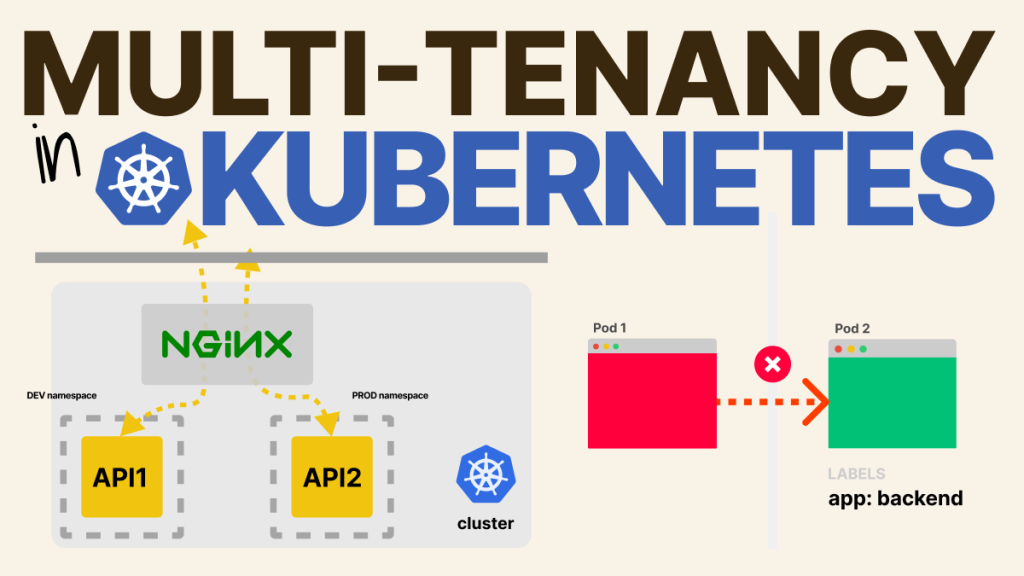Kubernetes multi-tenancy is an effective and flexible strategy that enables multiple users or teams to share a single Kubernetes cluster efficiently. By implementing this approach, organizations can optimize resource allocation, reduce operational costs, and enhance overall efficiency in managing containerized applications.
With kubernetes multi-tenancy, each tenant is provided with isolated and secure environments, ensuring their applications and data remain separate and protected. This facilitates collaboration among different teams and allows for better scalability and improved resource utilization within the cluster.
Kubernetes multi-tenancy has several practical applications in everyday scenarios. These include deploying microservices architectures, facilitating development and testing environments, and enabling multi-application deployments. Embracing such a versatile approach empowers organizations to manage their resources and enhance overall operational efficiency efficiently.
By harnessing the power of kubernetes multi-tenancy, organizations can unlock enhanced flexibility and agility in their containerized deployments. This translates to heightened productivity and accelerated time to market. Join us as we delve into the boundless potential and myriad benefits of kubernetes multi-tenancy for modern application development and deployment.

Gaining a Deeper Understanding of Kubernetes Multi-Tenancy
To fully appreciate the use cases of kubernetes multi-tenancy, we first need to understand what it entails. In a nutshell, kubernetes multi-tenancy involves sharing a single kubernetes cluster between different tenants, which could be teams, departments, or customers. The primary aim is to maximize resource utilization and minimize costs.
An essential feature of kubernetes multi-tenancy is resource isolation and management. By dividing resources into distinct namespaces, different teams can work independently within the same cluster without disrupting each other’s operations. This efficient resource management strategy ensures smooth and effective operations.
Exploring the Common Use Cases of Kubernetes Multi-Tenancy
Now that we understand Kubernetes multi-tenancy let’s delve into its everyday use cases.
1: Cost Management
One of the most significant advantages of Kubernetes multi-tenancy is cost management. Operating separate clusters for different teams or projects can lead to high expenses. However, adopting a multi-tenancy model can distribute these costs among multiple tenants, resulting in substantial savings.
2: Efficient Infrastructure Usage
Kubernetes multi-tenancy promotes efficient infrastructure usage. Instead of maintaining separate infrastructures for each tenant, you can operate a shared infrastructure that serves all tenants. This not only reduces infrastructure-related costs but also simplifies infrastructure management and maintenance.
3: Enhanced Return on Investment (ROI)
Another compelling use case for Kubernetes multi-tenancy is the potential for improved ROI. By optimizing resource usage and reducing overhead costs, Kubernetes multi-tenancy can significantly enhance the ROI of your Kubernetes deployment.
4: Support for Multiple Environments
Kubernetes multi-tenancy also facilitates support for multiple environments. For instance, you may have separate teams working on development, testing, and production. With multi-tenancy, each team can have its dedicated environment within the same cluster, promoting effective collaboration and workflow management.
Adopting Best Practices for Kubernetes Multi-Tenancy
While Kubernetes multi-tenancy offers numerous benefits, adopting best practices is crucial to ensure smooth operations. These include setting appropriate resource limits, implementing robust security measures, and regularly monitoring the cluster for optimal performance.
In Conclusion – What are common use cases for Kubernetes multi-tenancy?
Kubernetes multi-tenancy is an impactful strategy with a multitude of compelling use cases. It offers benefits ranging from cost management and infrastructure efficiency to enhanced ROI and support for diverse environments. By comprehending these use cases and following best practices, you can fully harness the potential of Kubernetes multi-tenancy to enhance your operational efficiency.